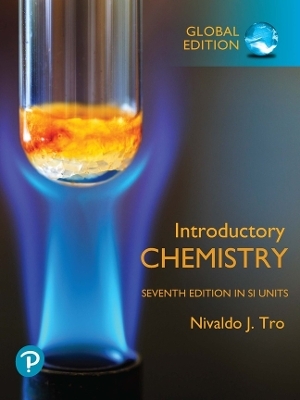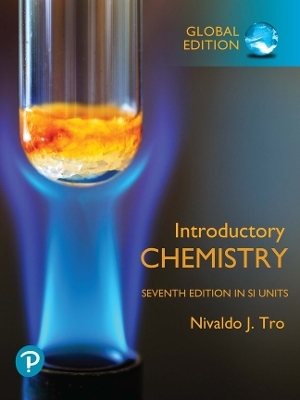
Fluxional Organometallic and Coordination Compounds
John Wiley & Sons Inc (Hersteller)
978-0-470-85845-5 (ISBN)
- Keine Verlagsinformationen verfügbar
- Artikel merken
This series offers leading contributions by well-known chemists reviewing the state of the art of this wide research area. Physical organometallic chemistry aims to develop new insights and to promote novel interest and investigations applicable to organometallic chemistry. This volume focuses on several important topics on fluxionality in organometallic and coordination chemistry, reviewed by experts in each of the respective fields. It is intended to provide both authoritative concepts and stimulating ideas in order to tackle dynamics from different angles, aiming at an interdisciplinary approach. The fascinating fluxionality of metal-ligand interactions has been in the centre of interest ever since modern coordination and organometallic chemistry started, and has expanded towards bioinorganic chemistry, catalysis and materials sciences.* Provides information on some of the most relevant physical methods for studying dynamic processes* Presents numerous examples of dynamic behavior, demonstrating the efficiency of the respective method and stimulating further applications* Connects main group, transition metal and solid state chemistry in the question for dynamics
Marcel Gielen, Professor Emeritus, Free University of Brussels, Belgium. Member of the Editorial Board on the journal, Applied Organometallic Chemistry. Rudolph Willem, Free University of Brussels, Belgium. Member of the Editorial Board on the journal, Applied Organometallic Chemistry. Bernd Wrackmeyer, Universitat Bayreuth, Germany. Member of the Editorial Board on the journal, Magnetic Resonance in Chemistry.
Contributors. Series Preface. Preface. 1. Polyhedral Dynamics and the Jahn-Teller Effect (R. Bruce King). 1. Introduction. 2. Polyhedron Topology. 3. Polyhedral Isomerizations: Microscopic Models. 3.1 Diamond-Square-Diamond Processes. 3.2 Gale Diagrams. 3.3 Generation of Metallaborane Structures by Diamond-Square-Diamond Transformations in Deltahedra. 4. Polyhedral Isomerizations: Macroscopic Models. 4.1 Topological Representations of Polyhedral Isomerizations. 4.2 Topological Representations of Jahn-Teller Distortions. 5. Acknowledgement. 6. References. 2. NMR Studies of Intramolecular Dynamics in Allylic Type Triorganoboranes (I. D. Gridnev and O. L. Tok). 1. Introduction. 2. Discovery Activation Parameters of [1,3]-B Shifts. 3. Fluxional Linear Polyunsaturated Allylboranes. 3.1 2,4-Pentadienyl(di-n-propyl)borane. 3.2 2,4,6-Heptatrienyl(di-n-propyl)borane. 4. DynamicBeha vior of CyclicAll ylboranes. 4.1 Dynamic Equilibria Between 2-(Dialkylboryl)methylenecyclobutanes and 1-(Dialkylboryl)cyclobutenes. 4.2 DynamicPr operties of Cyclopentadienyl and Pentamethylcyclopentadienyl Derivatives of Boron. 4.3 Synthesis and DynamicPr operties of 1-Indenyl(diethyl)borane. 4.4 DynamicBeha vior of Cycloheptadienyl(di-n-propyl) borane. 4.5 Synthesis and DynamicPr operties of Cycloheptatrienyl(di-npropyl) borane. Equilibrium with 7-(Di-n-propylboryl)norcaradiene. 4.6 Three Independent Dynamic Processes in the Irontricarbonyl Complex of Cycloheptatrienyl(di-n-propyl)borane. 4.7 Cyclooctatetraenyl(di-n-propyl)borane. 4.8 SigmatropicMigr ations and Thermal Rearrangements in Cyclononatetraenyl(di-n-propyl)borane. Comparison with the DynamicPr operties of Cyclononatetraenyl(trimethyl)tin. 4.9 BorotropicMigr ations in Phenalenyl(di-n-propyl)borane 24. 5. Diverse Chemoselectivity of Cyclic Polyunsaturated Organoboranes. 5.1 Chemical Behavior of Borane 23. 5.2 Diverse Chemoselectivity of 9-Cyclopentyl-9-borabarbaralane 54e. 6. Conclusion. 7. References. 3. Dynamic Behavior of Group 5 and 6 Transition Metal Complexes with NMR (S. Sakharov). 1. Introduction. 2. Rotational Isomerism in Amido and Ketimido Complexes. 2.1 Rotational Isomerism in Oxofluoramido Complexes of Tungsten(VI). 2.2 Restricted M-NR2 Rotation in the Dinuclear Complexes with M26+ Core (M =W,Mo). 2.3 Features of DynamicBeha vior of Amido Cyclopentadienyl Complexes of Group 5 Transition Metals. 2.4 Internal Hindered Rotation of Ketimido Ligands. 3. DynamicBeha vior of d0 Transition Metal Complexes with n-Donor Two-Center Ligands. 3.1 Isomerization of Fluorocomplexes of Group 5-6 with O, N-Two-Center Ligands. 3.2 Isomerism of Transition Metal Complexes with N, N-Two-center Ligands. 3.3 Nature of Bonding of n-Donor Two-center Ligands in d0 Transition Metal Complexes. 3.4 Mechanism of Internal Hindered Rotation of -2-Bound Ligands. 4. Conclusion. 5. References. 4. Conformational Mobility in Chelated Square-planar Rh, Ir, Pd, and Pt Complexes (P. Espinet and J. A. Casares). 1. Introduction. 2. Conformational Changes in Five-member Metallacycles. 3. Conformational Changes in Six-member Metallacycles. 4. Conformational Changes in Five- or Six-member Metallacycles Involving Coordinated Olefins. 5. Conformational Changes in Seven-member Metallacycles. 6. Conformational Changes in Higher Metallacycles. 7. Acknowledegment. 8. References. 5. Dynamic and Kinetic Aspects of Metallodrugs by NMR (F. Li and H. Sun). 1. Introduction. 2. Methods of Study by NMR. 3. Platinum Anticancer Drugs. 3.1 195Pt, 15N and Inverse [1H, 15N] NMR Spectroscopy. 3.2 Activation of Platinum Anticancer Drugs: Kinetics and Equilibria of Aquation. 3.3 Platination of Nucleotides and DNA. 3.4 Interaction of Platinum Agents with Amino Acids, Peptides and Proteins. 4. Titanium and Ruthenium Anticancer Agents. 5. Gold Antiarthritic Drugs. 6. Antimony Antiparasitic and Bismuth Antiulcer Drugs. 7. Vanadium Antidiabetic Mimetics. 8. MRI Contrast Agents. 9. Concluding Remarks. 10. Abbreviations. 11. Acknowledgements. 12. References. 6. Dynamics by EPR: Picosecond to Microsecond Time Scales (S. Van Doorslaer and G. Jeschke). 1. Introduction. 2. Scope of EPR Spectroscopy. 2.1 Native Paramagnetic Centers. 2.2 Spin Labels and Spin Probes. 3. A Brief Primer on EPR Spectroscopy. 3.1 Interactions of Electron Spins with Their Environment. 3.2 Relaxation. 3.3 Measurement Techniques. 4. Detection of Dynamic Processes by EPR. 4.1 Slow Tumbling. 4.2 Exchange Processes. 4.3 Dynamic Jahn-Teller Effect. 4.4 Chemically Induced Dynamic Electron Polarization (CIDEP). 5. Application Example: How to Combine Different EPR Techniques. 6. Acknowledgements. 7. References. 7. muSR Studies of Molecular Dynamics in Organometallics (U. A. Jayasooriya). 1. Introduction. 2. Muon. 3. Muon in Matter. 4. Experiment. 5. Muon in a Longitudinal MagneticField. 6. Muon-Electron (Muonium Like) System. 7. Molecular Dynamics. 8. Studies of Organometallics. 8.1 Tetraphenyl Metals. 8.2 Benzene Chromium Tricarbonyl. 8.3 Cyclopentadienyl Manganese Tricarbonyl. 8.4 Ruthenocene. 8.5 Ferrocene. 8.6 Ferrocene Encapsulated in Zeolite. 9. Conclusion. 9. Acknowledgements. 10. References. 8. Proton Dynamics in Solids: Vibrational Spectroscopy with Neutrons (F. Fillaux). 1. Introduction. 2 .Vibrational Spectroscopy Techniques. 2.1 Some Definitions. 2.2 Optical Techniques. 2.3 Neutron Scattering Techniques. 2.4 Potassium Hydrogen Bistrifluoroacetate. 3. Vibrational Dynamics of Protons in Solids. 3.1 Force-Field Calculations: Normal versus Localized Modes. 3.2 The Proton Crystal Model. 4. Tunnelling. 4.1 Proton Transfer. 4.2 Rotational Tunnelling. 5. Conclusions. 6. References. Index.
| Erscheint lt. Verlag | 3.8.2005 |
|---|---|
| Verlagsort | New York |
| Sprache | englisch |
| Maße | 167 x 239 mm |
| Gewicht | 624 g |
| Themenwelt | Naturwissenschaften ► Chemie |
| ISBN-10 | 0-470-85845-1 / 0470858451 |
| ISBN-13 | 978-0-470-85845-5 / 9780470858455 |
| Zustand | Neuware |
| Haben Sie eine Frage zum Produkt? |
aus dem Bereich


